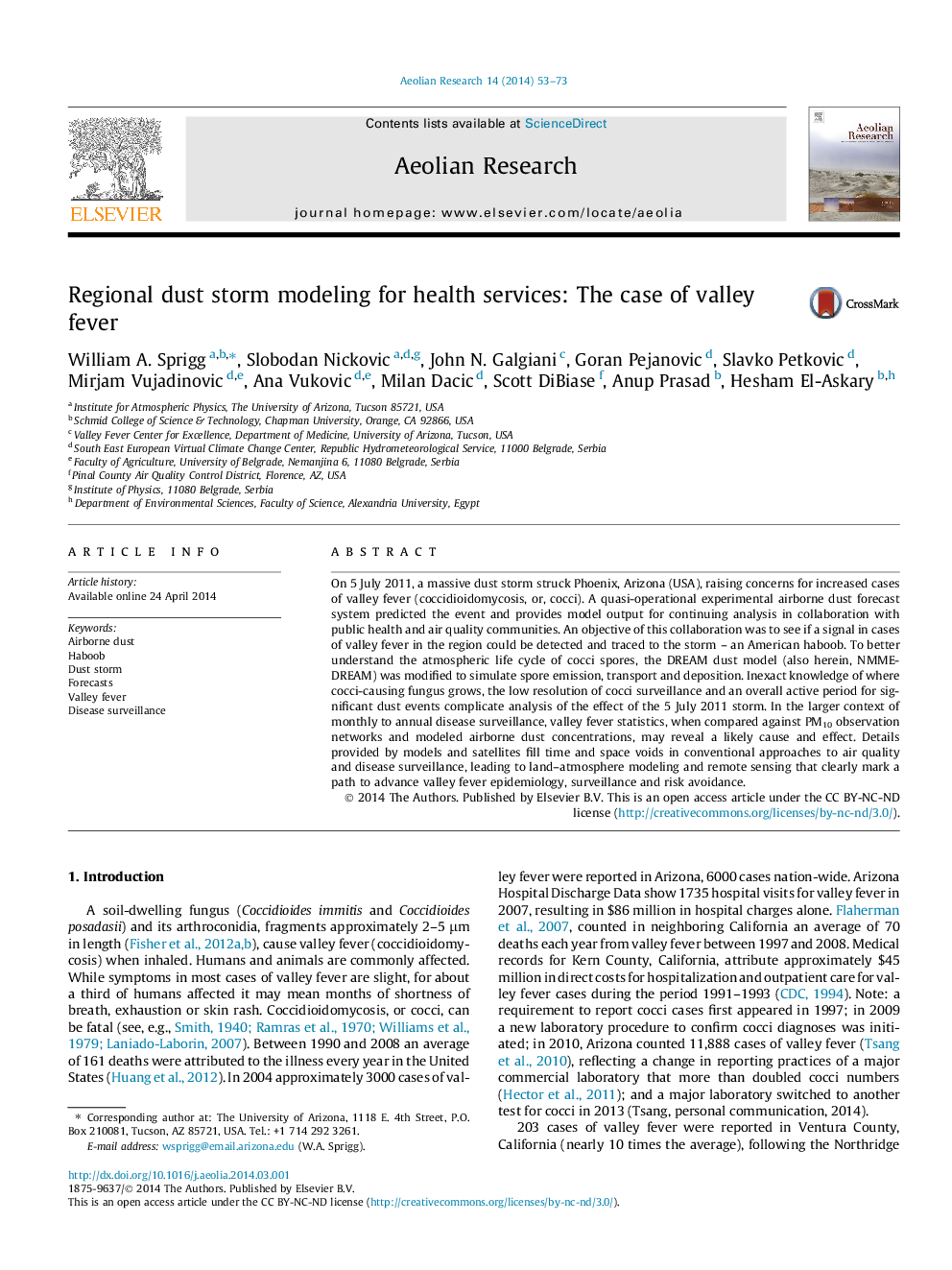| کد مقاله | کد نشریه | سال انتشار | مقاله انگلیسی | نسخه تمام متن |
|---|---|---|---|---|
| 6426422 | 1634113 | 2014 | 21 صفحه PDF | دانلود رایگان |
- Active, rural dust emission sites that pose health risk in Arizona are identified.
- Evidence links desert dust (PM10) with monthly and annual county valley fever.
- Model PM10 hind-casts support a link between airborne desert dust and valley fever.
- Confidence in haboob-valley fever link requires detailed disease surveillance.
- Model operations add detail for epidemiology in rural, underserved communities.
On 5 July 2011, a massive dust storm struck Phoenix, Arizona (USA), raising concerns for increased cases of valley fever (coccidioidomycosis, or, cocci). A quasi-operational experimental airborne dust forecast system predicted the event and provides model output for continuing analysis in collaboration with public health and air quality communities. An objective of this collaboration was to see if a signal in cases of valley fever in the region could be detected and traced to the storm - an American haboob. To better understand the atmospheric life cycle of cocci spores, the DREAM dust model (also herein, NMME-DREAM) was modified to simulate spore emission, transport and deposition. Inexact knowledge of where cocci-causing fungus grows, the low resolution of cocci surveillance and an overall active period for significant dust events complicate analysis of the effect of the 5 July 2011 storm. In the larger context of monthly to annual disease surveillance, valley fever statistics, when compared against PM10 observation networks and modeled airborne dust concentrations, may reveal a likely cause and effect. Details provided by models and satellites fill time and space voids in conventional approaches to air quality and disease surveillance, leading to land-atmosphere modeling and remote sensing that clearly mark a path to advance valley fever epidemiology, surveillance and risk avoidance.
Journal: Aeolian Research - Volume 14, September 2014, Pages 53-73
